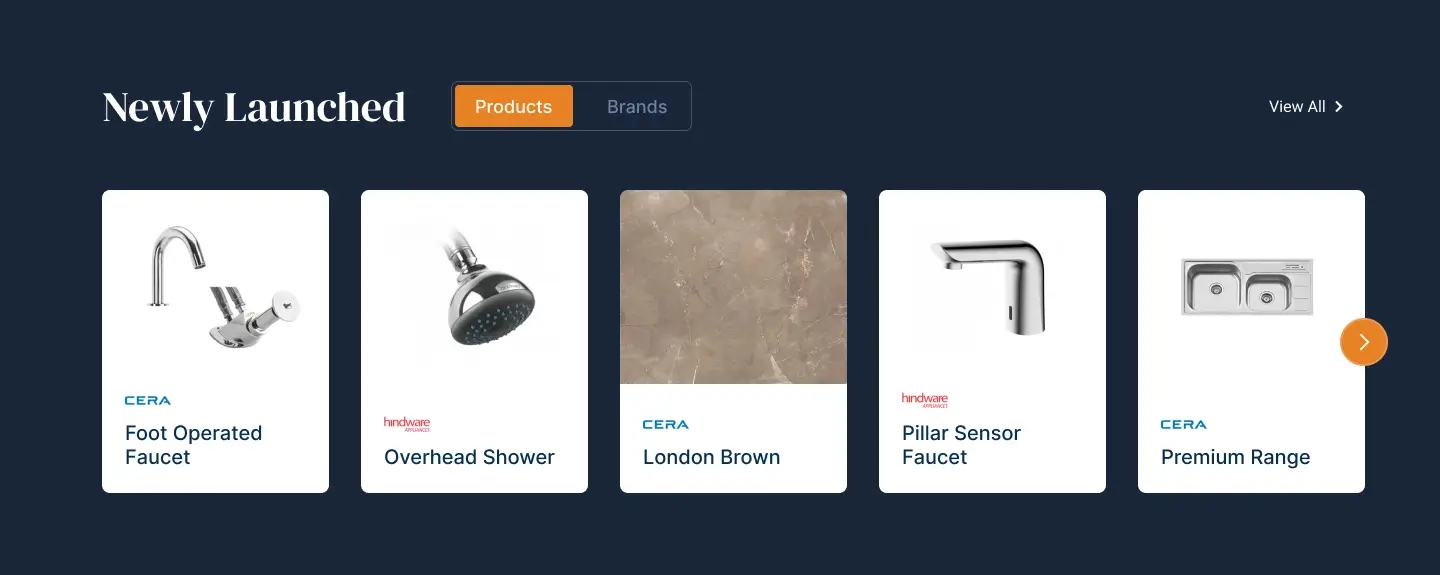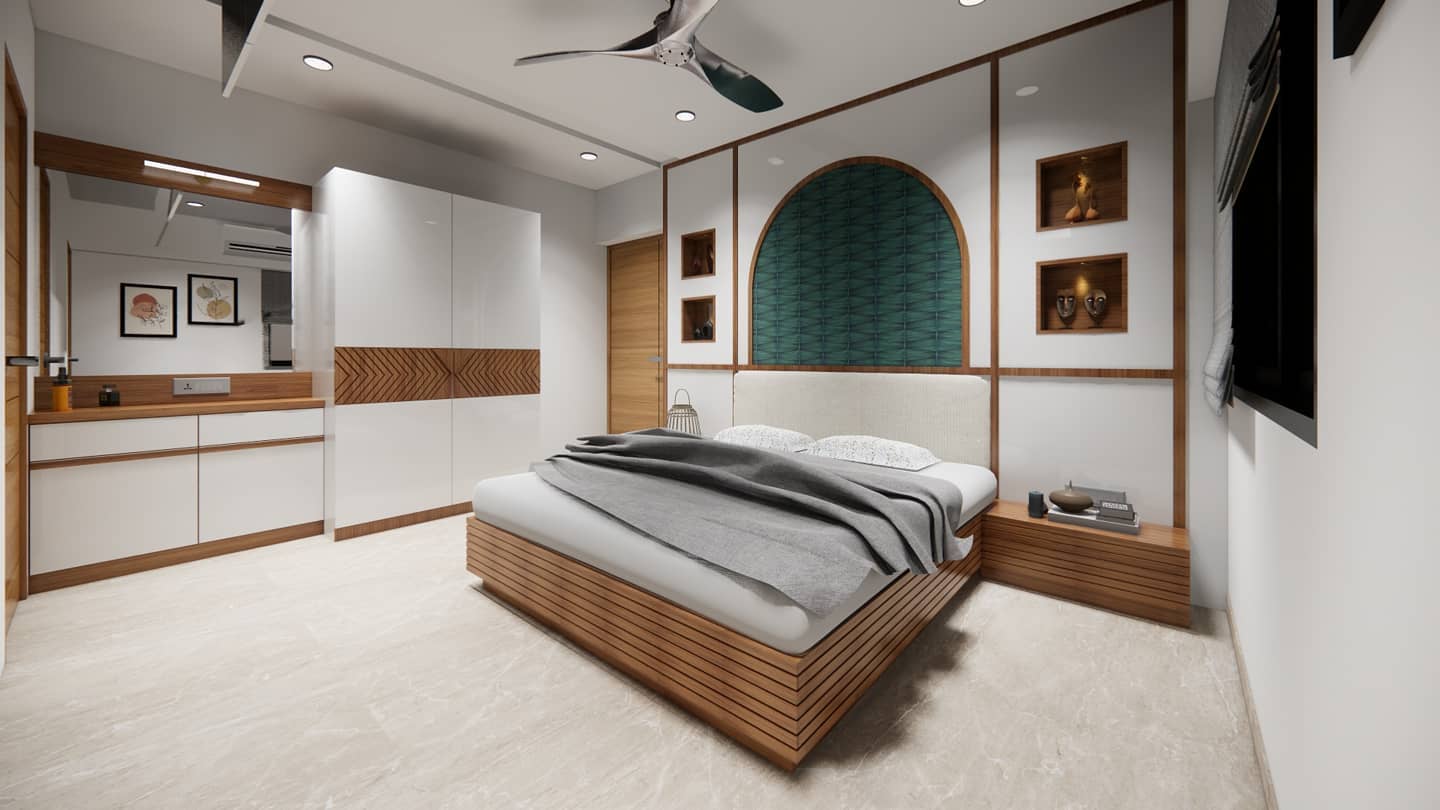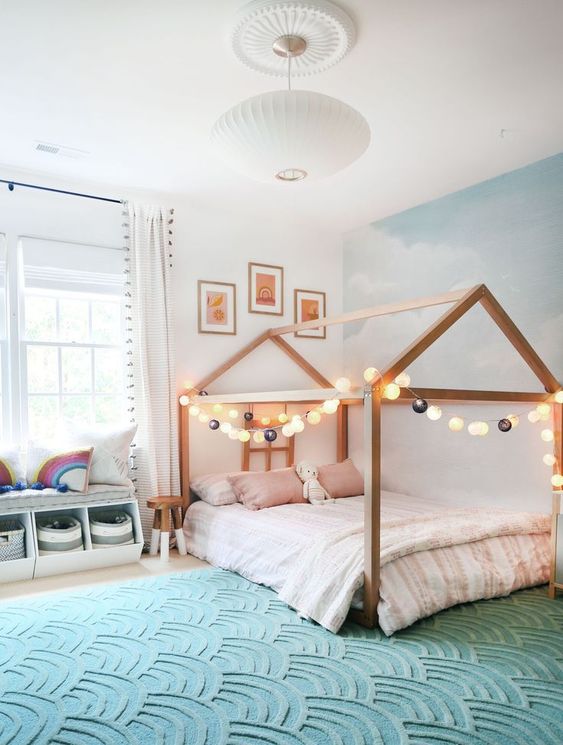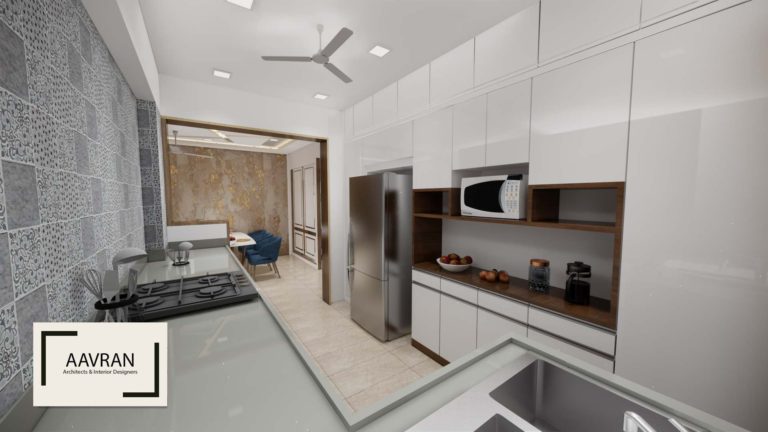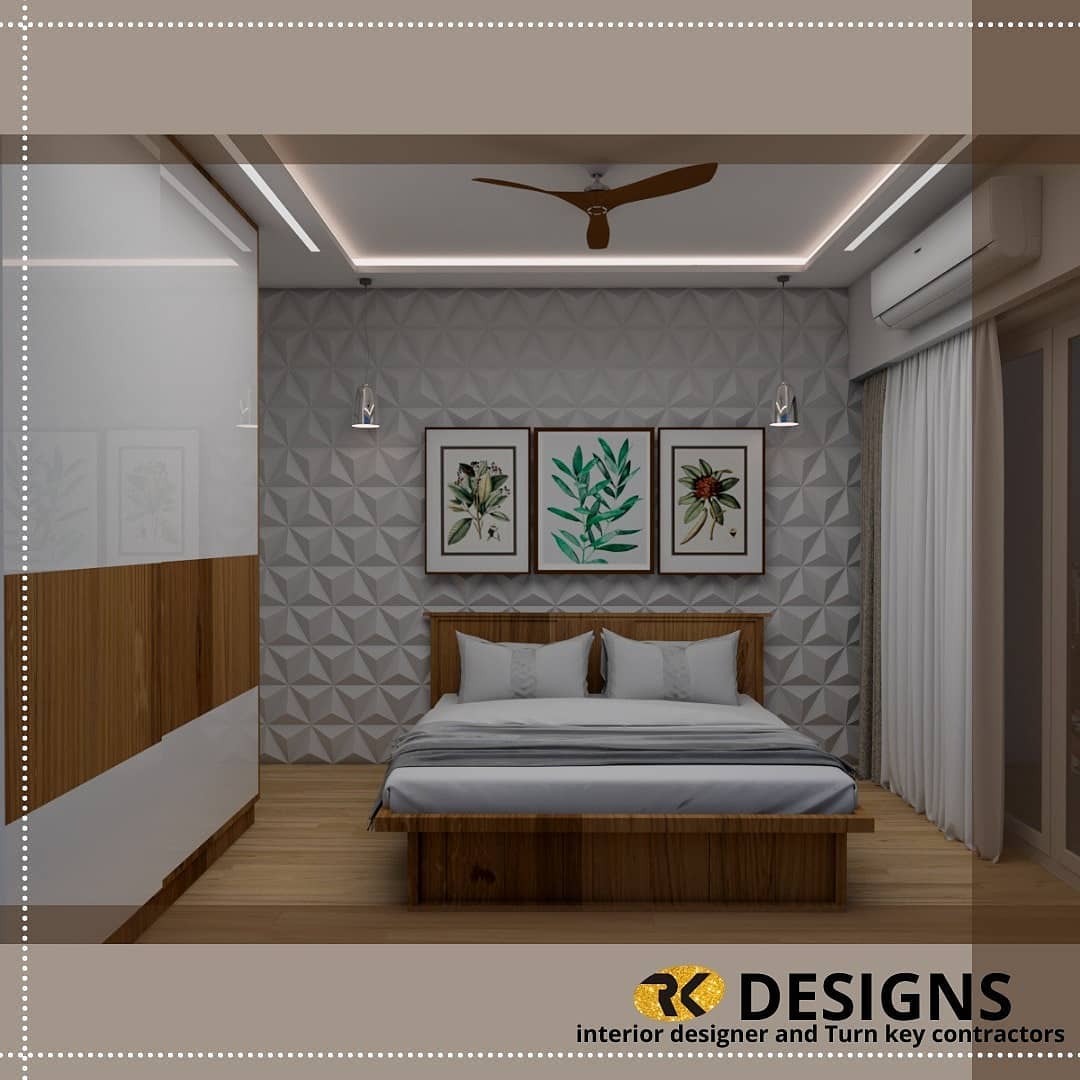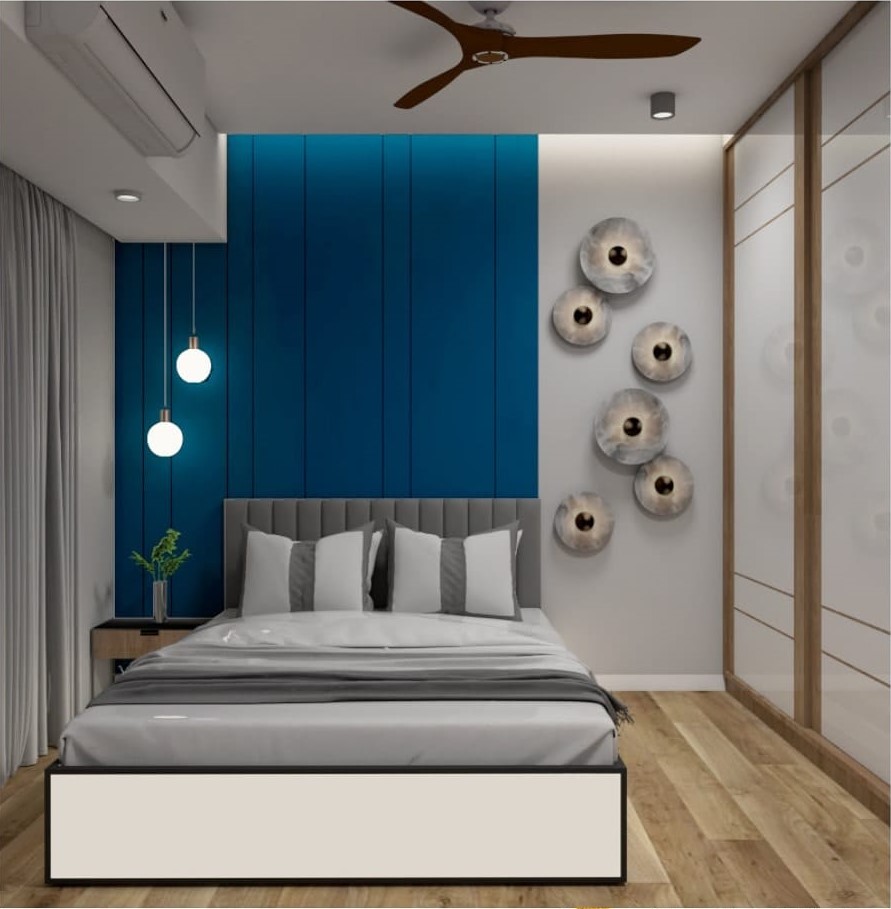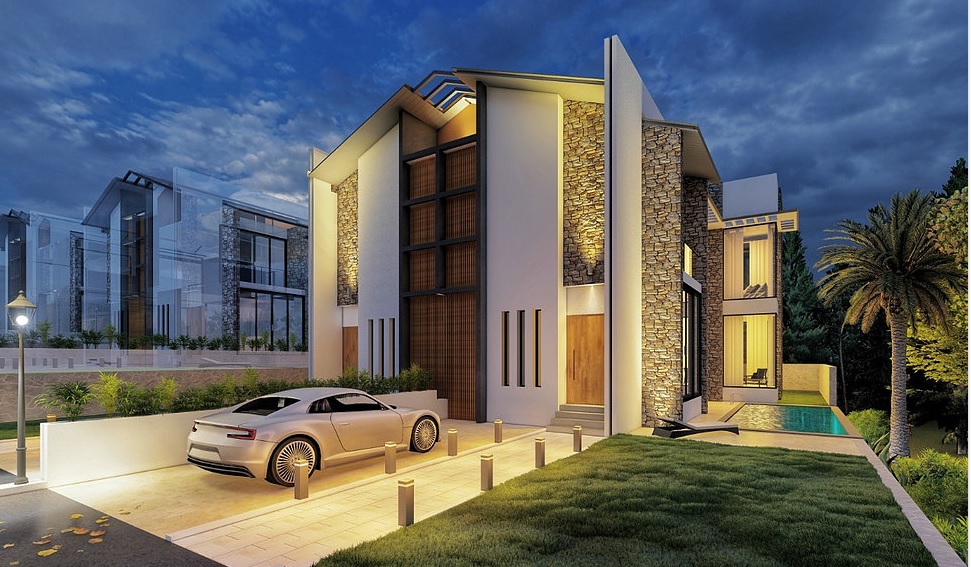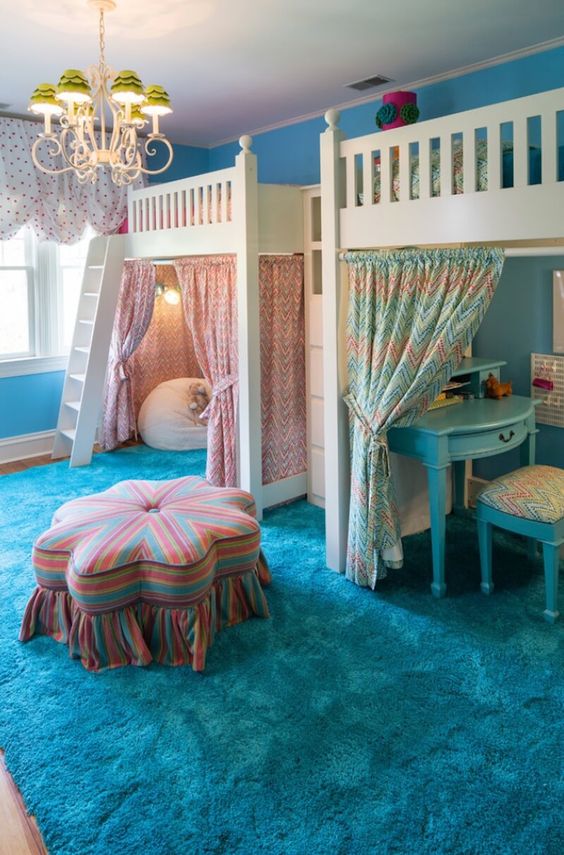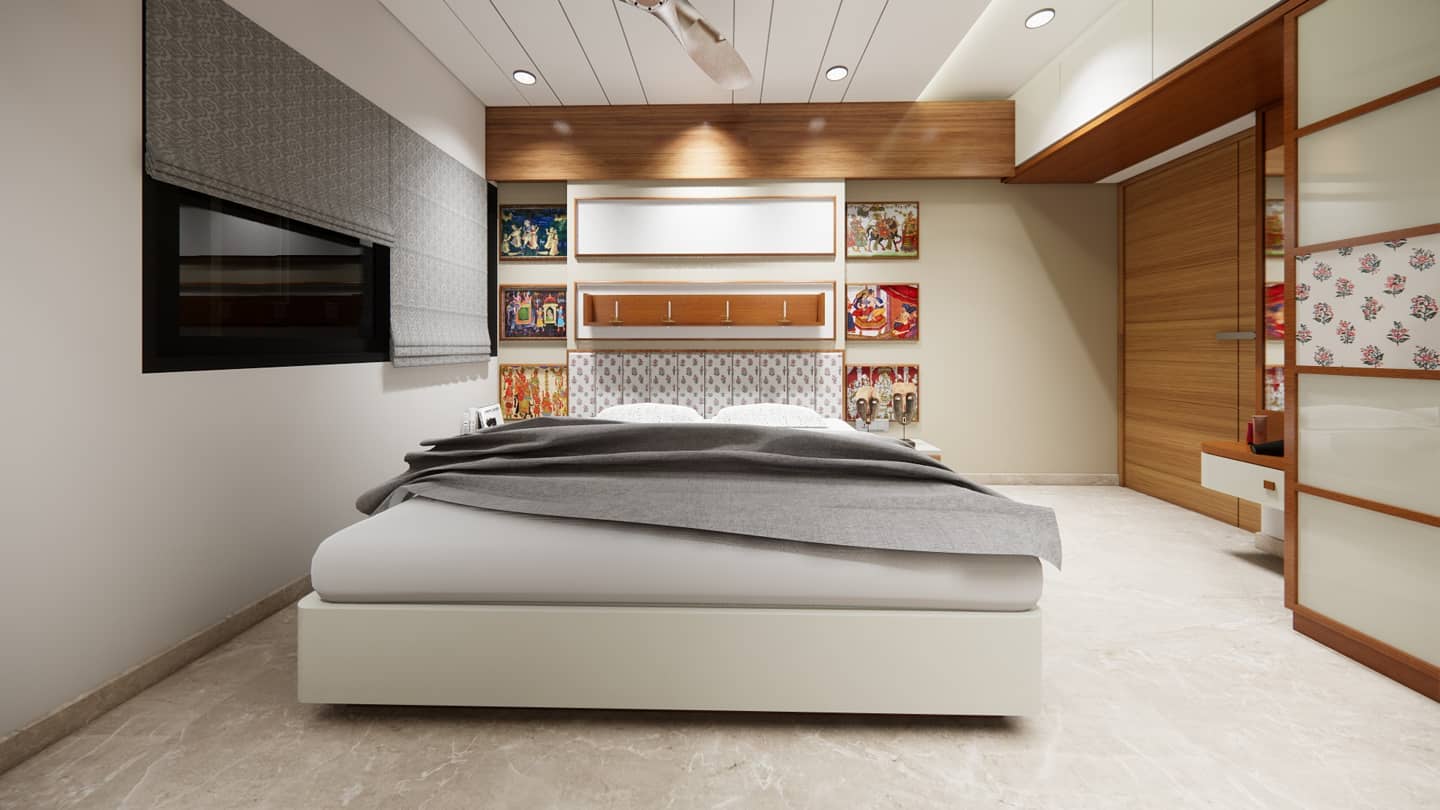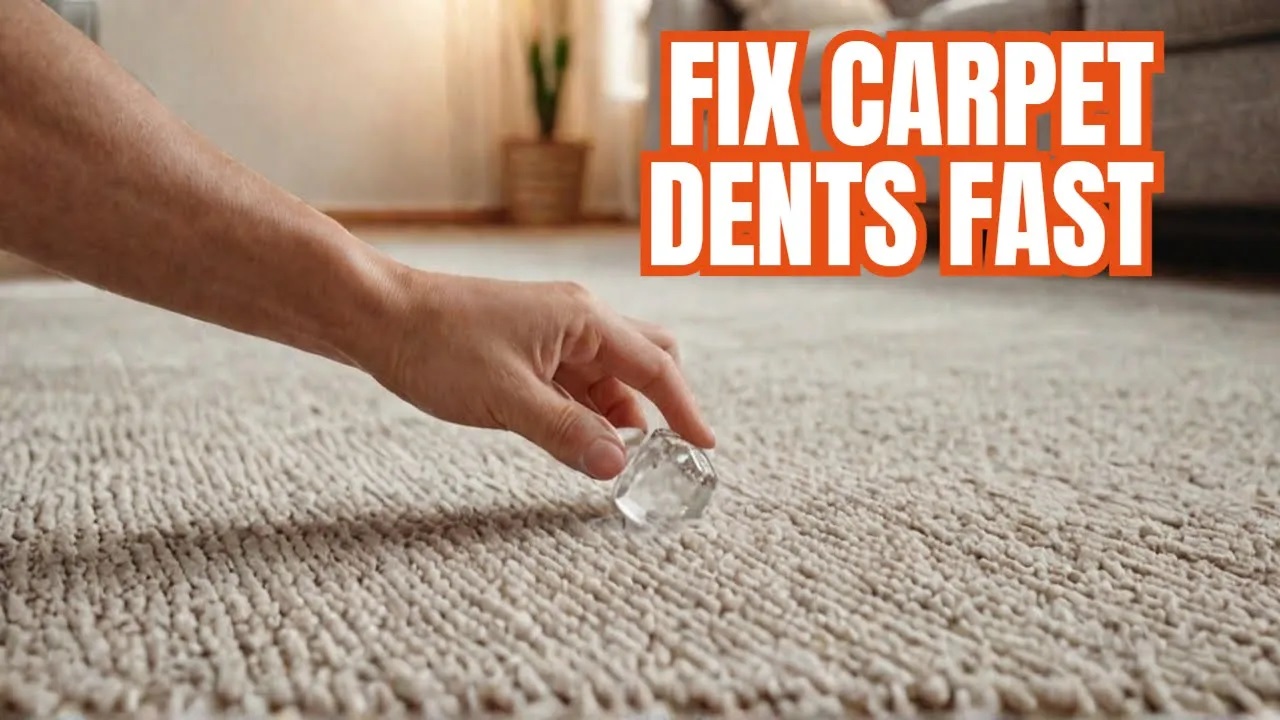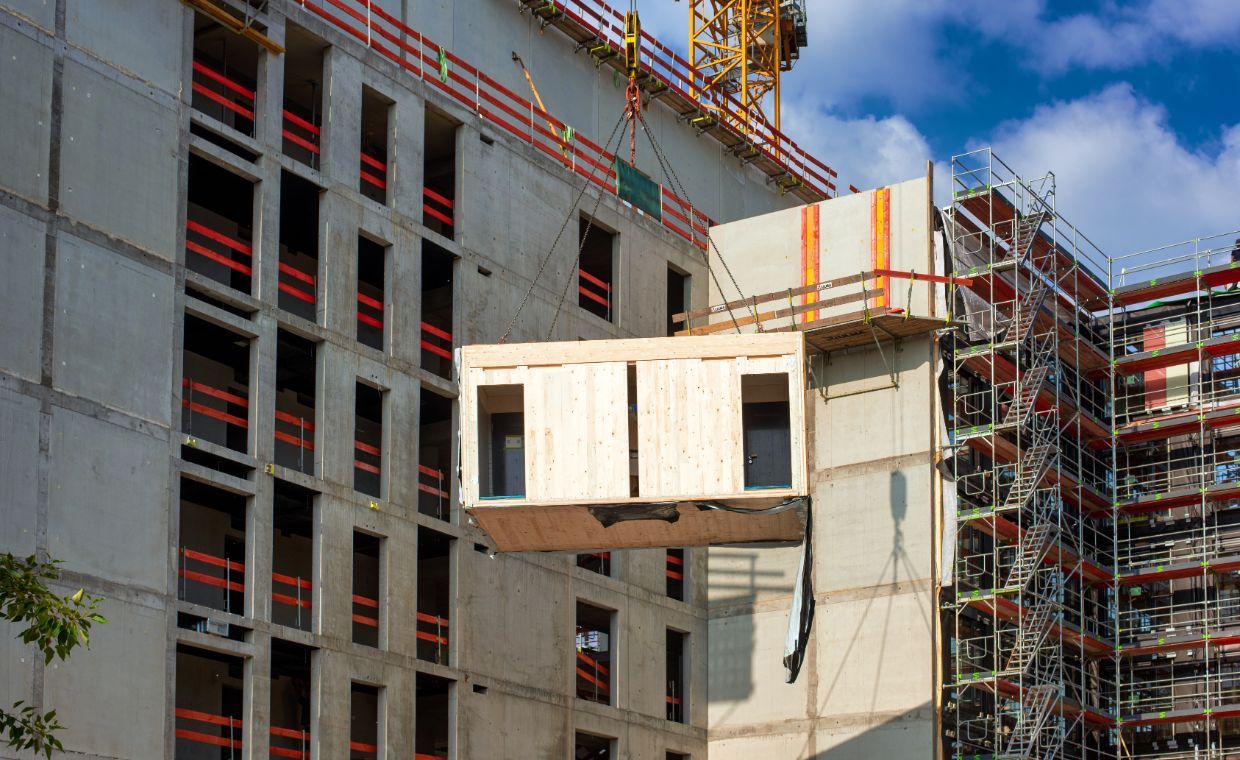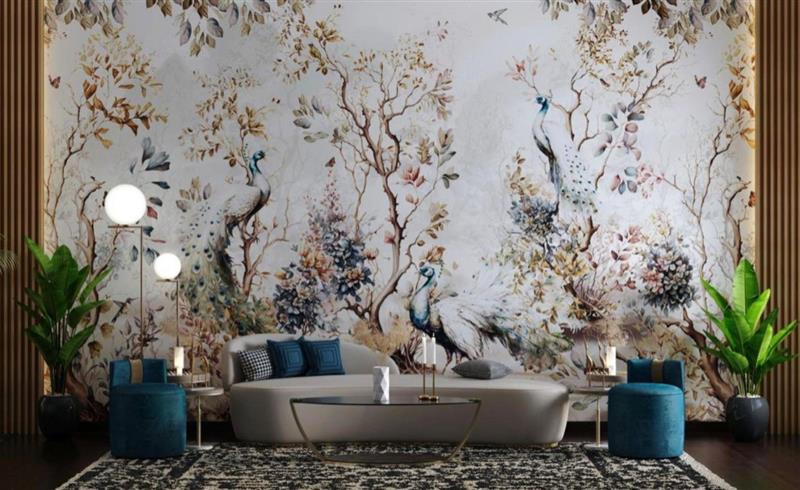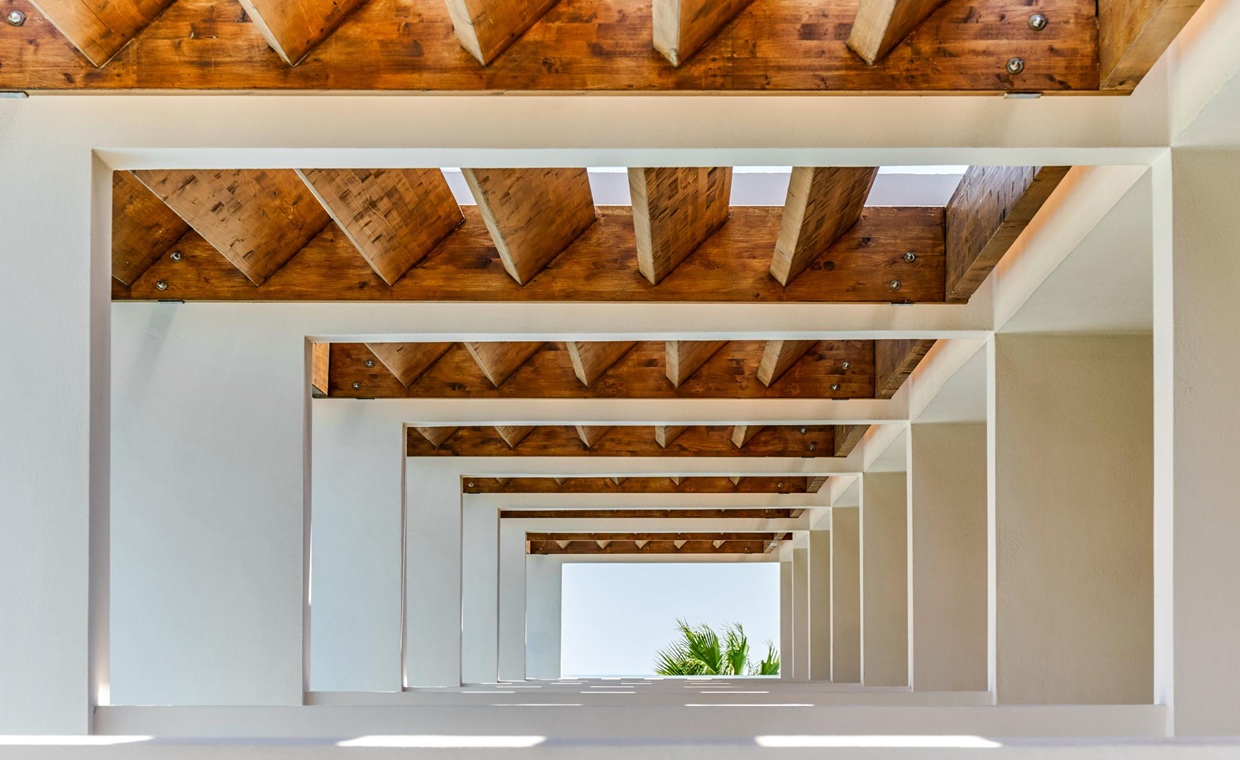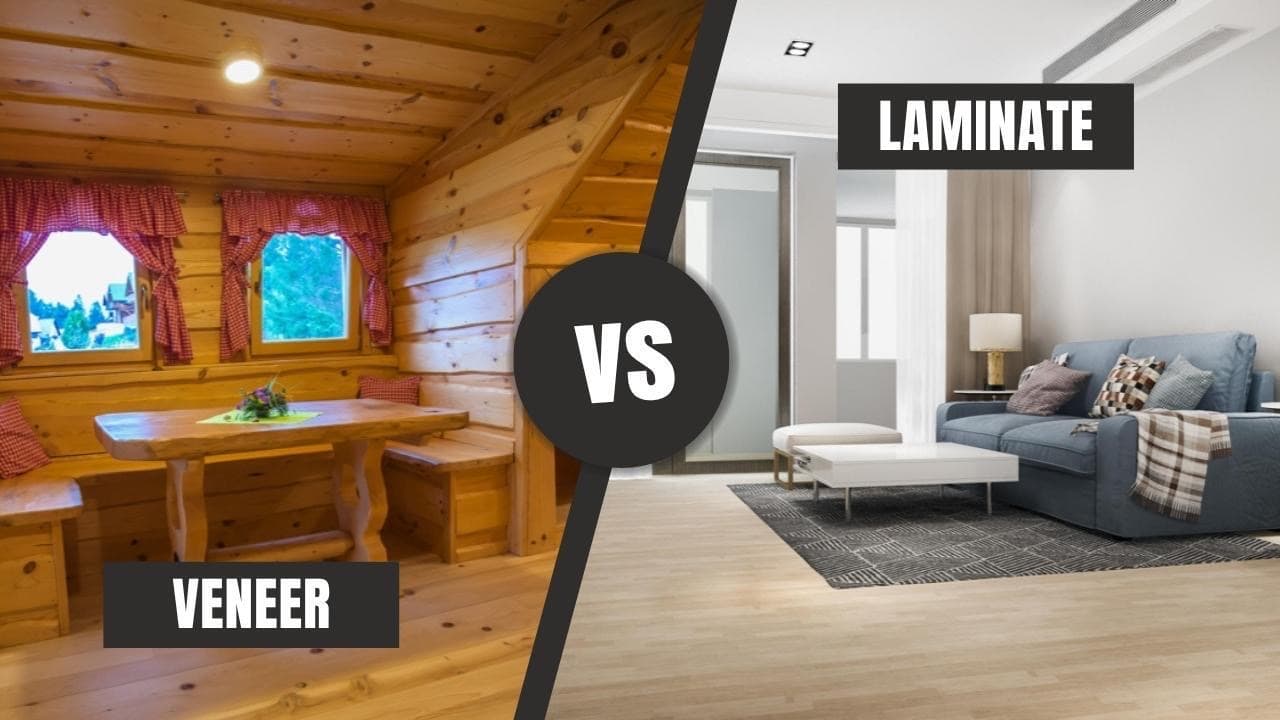
Table of Contents
When designing or renovating a home, the choice of finishing materials for furniture and interiors plays a crucial role in both aesthetics and durability. Veneer and laminate are two of the most popular surface finishes, often used for cabinets, wardrobes, doors, and furniture. While they may serve a similar purpose, they are fundamentally different in terms of composition, durability, cost, and maintenance.
If the debate is about veneer vs. laminate, we will help you make an informed decision based on your specific needs and budget.
Understanding Veneer and Laminate
What is Veneer?

Veneer is a thin slice of natural wood that is obtained by peeling or slicing logs. These thin sheets are then glued onto a core material like plywood or MDF to create a wood-like finish. Because veneer is made from real wood, it retains the natural beauty, grain, and warmth that solid wood offers. The benefits of veneer include a natural wood finish, customizable appearance, and eco-friendly construction.
What is Laminate?

Laminate, on the other hand, is a man-made material consisting of multiple layers of paper or fabric infused with resin, bonded under high pressure. The topmost layer features a decorative print that can mimic wood, stone, or other textures, offering a wide variety of design options. There are various types of laminate finishes available, such as woodgrain, metallic, matte, glossy textured and high-gloss options.
Veneer vs Laminate: A Detailed Comparison

| Feature | Veneer | Laminate |
| Material Composition | Natural wood sheet applied to a core material. | Synthetic product made from resin and paper layers. |
| Appearance | Offers a rich, authentic wood look with unique grain patterns. | Available in numerous designs, colours, and textures, but patterns may repeat. |
| Durability | Prone to scratches, dents, and water damage if not maintained properly. | Resistant to scratches, stains, and moisture, making it ideal for heavy use. |
| Customisation | Can be polished or stained to achieve the desired finish. | Cannot be polished or stained; comes as a pre-finished product. |
| Maintenance | Requires periodic polishing and care to maintain its look. | Easy to clean; requires minimal maintenance. |
| Resistance to Water & Heat | Susceptible to moisture and heat damage if not sealed properly. | More resistant to water and heat than veneer. |
| Installation | Requires skilled labour and a longer installation process. | Easy to install and can be applied over existing surfaces. |
| Environmental Impact | More eco-friendly as it is derived from natural wood. | Less sustainable as it involves synthetic materials and chemicals. |
| Cost | Expensive, varies depending on wood type and quality. | More budget-friendly compared to veneer. |
| Lifespan | Can last a long time if properly maintained. | Lifespan depends on usage, but can wear out once the top layer is damaged. |
Pros and Cons of Veneer and Laminate
Advantages of Veneer
- Natural Aesthetic – Since veneer is real wood, it provides an authentic and luxurious appearance.
- Customisation – Veneer can be sanded, stained, or refinished over time to maintain its look.
- Environmentally Friendly – Compared to laminates, veneers are more sustainable as they use fewer processed materials.
Disadvantages of Veneer
- High Maintenance – Requires regular polishing and careful cleaning to prevent damage.
- Expensive – Veneers are costlier due to their natural origin and the craftsmanship involved in installation.
- Less Resistant to Damage – Prone to scratches, dents, and water damage, making it unsuitable for high-moisture areas.
Also Read: Advantages and Disadvantages of Wood Veneers: A Complete Guide
Advantages of Laminate
- Highly Durable – Resistant to scratches, stains, and moisture, making it ideal for high-use areas like kitchens and offices.
- Budget-Friendly – More affordable than veneer, making it a popular choice for cost-conscious buyers.
- Low Maintenance – Easy to clean and does not require polishing or refinishing.
- Wide Variety of Designs – Available in different colours, patterns, and textures to match any décor style.
Disadvantages of Laminate
- Artificial Appearance – Though modern laminates can mimic wood, they lack the depth and exclusivity of real veneer.
- Non-Renewable Finish – Cannot be repainted or refinished once damaged.
- Environmental Concerns – Contains synthetic materials and chemicals that may emit volatile organic compounds (VOCs).
Best Applications of Veneer and Laminate
Where to Use Veneer?

- Luxury interiors – Best suited for high-end homes, hotels, and conference rooms.
- Furniture – Ideal for premium furniture pieces that require a natural wood feel.
- Walls and panelling – Enhances the elegance of walls and decorative panels.
Where to Use Laminate?

- Kitchen cabinets and countertops – Its durability and moisture resistance make it ideal for kitchens.
- Laminate furniture in offices– Used extensively in workspaces for desks, chairs, and storage units due to high laminate durability.
- Doors and wardrobes – A cost-effective option for frequently used surfaces.
Making the Right Choice: Veneer or Laminate?
Choosing between veneer and laminate depends on your priorities:
- If you prioritise aesthetics and a natural look, go for veneer. It adds warmth and character to interiors but requires more maintenance.
- If durability and affordability are key concerns, laminate is the better option. It withstands daily wear and tear and is easy to clean.
- For high-end, luxurious designs, veneer is the preferred choice, but it comes at a premium price.
- For heavy-use surfaces like kitchen cabinets and office furniture, laminates offer a practical and long-lasting solution.
Conclusion
Both veneer and laminate have their own advantages and drawbacks. Veneer provides a rich, timeless appeal but demands maintenance, whereas laminate offers affordability, durability, and ease of upkeep. The final decision should be based on your budget, usage, and the aesthetic you wish to achieve.
By understanding the differences between these materials, you can make an informed choice that enhances the functionality and beauty of your space.
FAQs Related to Veneer and Laminate
1. Which Is Better, Veneer or Laminate?
It depends on your needs. If you want a high-end, natural look and don’t mind maintenance, veneer is better. If you need a durable, cost-effective option, laminate is the way to go.
2. Can Veneer Furniture Be Refinished?
Yes, veneer can be sanded and re-polished multiple times, which helps restore its appearance over time.
3. Are Laminates Waterproof?
Most laminates have some level of water resistance, but they are not completely waterproof. Prolonged exposure to moisture can cause damage.
4. Why Is Veneer More Expensive Than Laminate?
Veneer is made from real wood, which is a natural and limited resource. Additionally, its installation requires skilled craftsmanship, making it costlier.
5. Can I Use Veneer in A Kitchen?
It is not recommended for high-moisture areas like kitchens unless properly sealed and maintained. Laminates are a better choice for kitchen cabinets and worktops.
Also Read:
Different Types of Wood Veneer & Their Uses
Explore the Fascinating World of Laminates, Their Types, Uses



